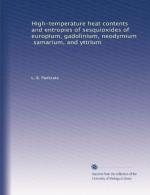|
This section contains 333 words (approx. 2 pages at 300 words per page) |
Gadolinium is a metal element that has a silvery luster with a pale, yellowish cast. Its atomic number is 64, atomic weight, 157.25, atomic symbol, Gd, melting point, 2,395.4 °F (1,313°C), and boiling point, 5,923.4°F (3,273°C). The metal is moderately active. It is stable in dry air, but tends to oxidize in moist air.
The discovery of gadolinium began with the work of Johan Gadolin (1760- 1852). He was an important figure throughout the history of the discovery of rare earth elements. In 1794, the Finnish chemist completed the first analysis of ytterite, a mineral found near the town of Ytterby, Sweden, in 1787. Gadolin found that ytterite contained about 38% of a new substance. In honor of this discovery, ytterite was later renamed gadolinite.
More than a century was to pass before chemists completely analyzed the composition of gadolinite. Along the way, they discovered 14 new elements. One of those elements was found in 1880 by the Swiss chemist Jean-Charles Galissard de Marignac (1817-1894). Marignac discovered that one fraction of gadolinite known as yttria contained a previously unknown element which he tentatively called Ya. Six years later, the same element was rediscovered by Paul Émile Lecoq de Boisbaudran. Boisbaudran proposed naming the element gadolinium for the mineral in which it was found, a decision with which Marignac agreed.
Gadolinium is the most efficient substance known for the capture of neutrons. This property would seem to make it useful in control rods in nuclear power reactors. But since the two (out of seven) isotopes most responsible for this property are in low abundance, the metal has had relatively little application in this field.
Gadolinium becomes highly magnetic at very low temperatures and shows unusual properties of superconductivity under similar conditions. The element is used in the manufacture of garnets used in microwave filters and in phosphors used in color television sets. The addition of small quantities of gadolinium to other metals and metallic mixtures improves the workability of these materials and their resistance to corrosion.
|
This section contains 333 words (approx. 2 pages at 300 words per page) |


